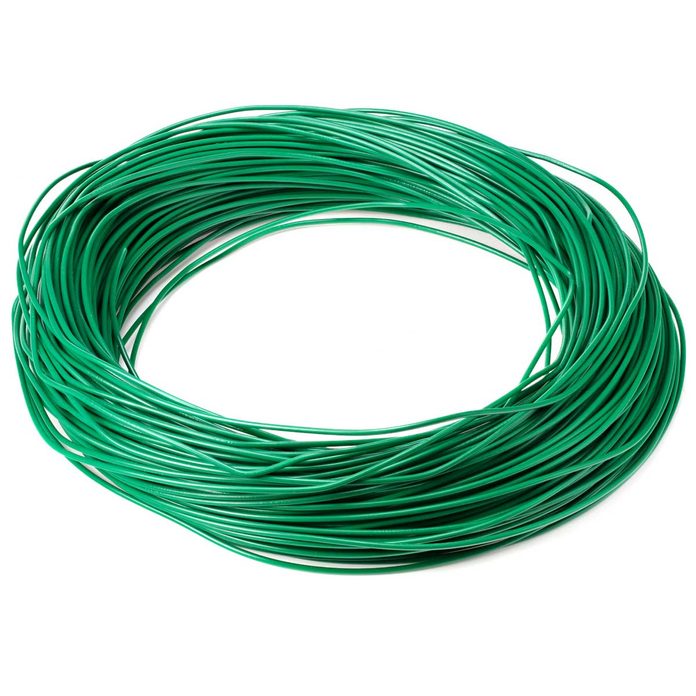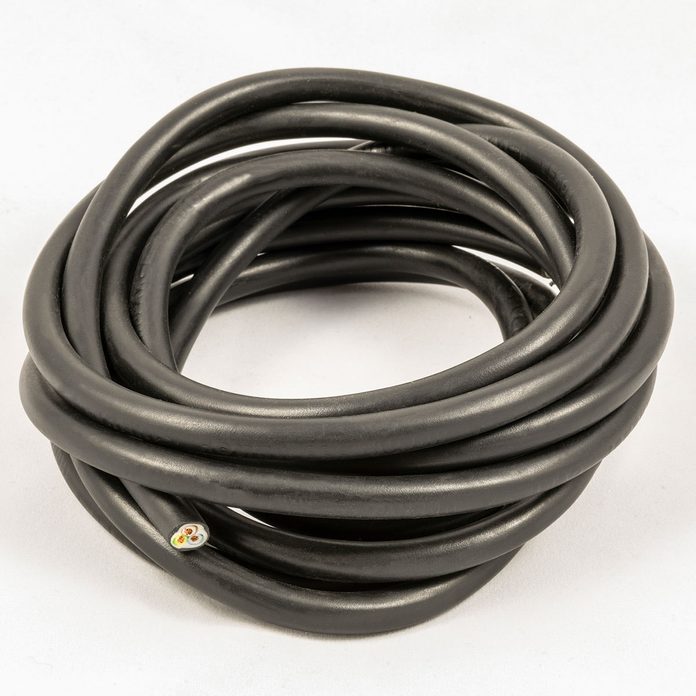Which Wire Has Writing On It
10 Electrical Wire Colors and What They Actually Mean
Need to do some electrical work, but don't know what those wire colors mean? Here's what you need to know about the colorful world of electrical wire in the U.S.
Every editorial product is independently selected, though we may be compensated or receive an affiliate commission if you buy something through our links. Ratings and prices are accurate and items are in stock as of time of publication.
1 / 5
 Dmytro/Getty Images
Dmytro/Getty Images
Green, Green-Yellow and Bare
According to Mark Dawson, chief operating officer of Mister Sparky, "green insulated wires are used for grounding." Green is the most common ground wire color, but "green-yellow" (green wire with a yellow stripe) and "bare" wire (copper wire without colored insulation) can also be used.
Ground wires reduce the risk of electrical overload and fires by redirecting excessive electricity during a short circuit or similar fault. Consequently, they can conduct electricity and should be handled with caution. "Never use a green wire for any purpose other than for grounding, as this may pose a serious threat of electrocution," Dawson says.
Older homes with"knob and tube" (K&T) wiring only have a black "hot" wire and white "neutral" wire, without any ground wire. "This older type of wiring does not provide a ground for modern appliances, which can lead to damage to the appliance or even worse — injury or death," says Dawson. If you discover this type of system while performing electrical work in your home, Dawson recommends replacement because "there is no way to make this type of wiring safe."
ⓘ
2 / 5
 bwzenith/Getty Images
bwzenith/Getty Images
Black
Black wires are "hot" wires, which means they carry a live current from your electrical panel to the destination. They feed electricity to electrical outlets, switches and appliances from the home's main power supply.
Black wires can also be used as "switch legs" that connect wall switches outlets and appliances (like ceiling fans or lights), and become energized when the switch is turned on. Black wires should always be considered live, so taking proper safety precautions is important to avoid electrocution. This includes shutting off the circuit breaker that supplies the wires you're working on, or shutting down the power to the whole house at the main electrical panel.
To verify the wire is no longer energized, Dawson recommends using a multimeter. A non-contact voltage tester can also be used.
3 / 5
 Alexan2008/Getty Images
Alexan2008/Getty Images
Red and Orange
Red electrical wires often act as secondary live wires. They're often used when installing larger appliances like stoves, dryers or air conditioning units. Smaller electrical appliances are often powered by a 120-volt circuit that only requires a single (black) supply wire, but larger appliances are often supplied by a 240-volt circuit that uses an additional (red) supply wire. Red wires can also be used in some 120-volt applications.
Like black wires, red wires can be used as switch legs. Dawson notes that red wires are commonly used when installing ceiling fans that use separate switches for the fan motor and light. When this is the case, the hot black wire is connected to one switch to operate the fan motor, and the hot red wire is connected to another switch to operate the light.
Red wires are also used as "trigger wires" for interconnected smoke alarms. In this case, the red trigger wires allow all the interconnected alarms to go off simultaneously when one alarm is triggered. Orange wire may be used in place of red for all of these purposes.
4 / 5
 66North/Getty Images
66North/Getty Images
White and Gray
"White or gray indicates a neutral wire," Dawson says. A neutral wire returns electricity from the hot wire back to a grounded portion of the home's electrical panel to complete the circuit. Without it, the electrical current couldn't circulate and the live wire couldn't provide usable power. As a result, a neutral wire can carry a live electrical current.
Dawson explains that the term neutral can be dangerously deceiving because appears to imply a non-electrified wire. However, neutral wires may carry power and can also pose a danger of electrocution if not handled properly.
Furthermore, neutral wires can be used as a hot wire if both ends are clearly marked with colored electrical tape (black or red) that corresponds to its repurposed function. In either case, handle them the same way you would a hot wire, and take the same safety precautions.
5 / 5
 Oleg83/Getty Images
Oleg83/Getty Images
Blue and Yellow
"Blue and yellow wires are sometimes used as hot wires," Dawson says. Specifically, blue and yellow electrical wires are often used as "traveler wires" for transferring power between three- or four-way switches.
Three-way and four-way switches operate a single appliance from multiple locations and use traveler wires to connect the switches. Blue and yellow are considered the most common travel wire colors, but brown or purple/violet can also be used. Yellow is more commonly used as a switch leg instead of a traveler wire in these applications.
Originally Published: February 12, 2021
Sign up for DIY projects sent right to your inbox
Complete DIY projects like a pro! Sign up for our newsletter!

Subscribe & SAVE 1 Year Subscription
for only $10!
Which Wire Has Writing On It
Source: https://www.familyhandyman.com/list/what-electrical-wire-colors-mean/
Posted by: ransdellnotle1998.blogspot.com

0 Response to "Which Wire Has Writing On It"
Post a Comment